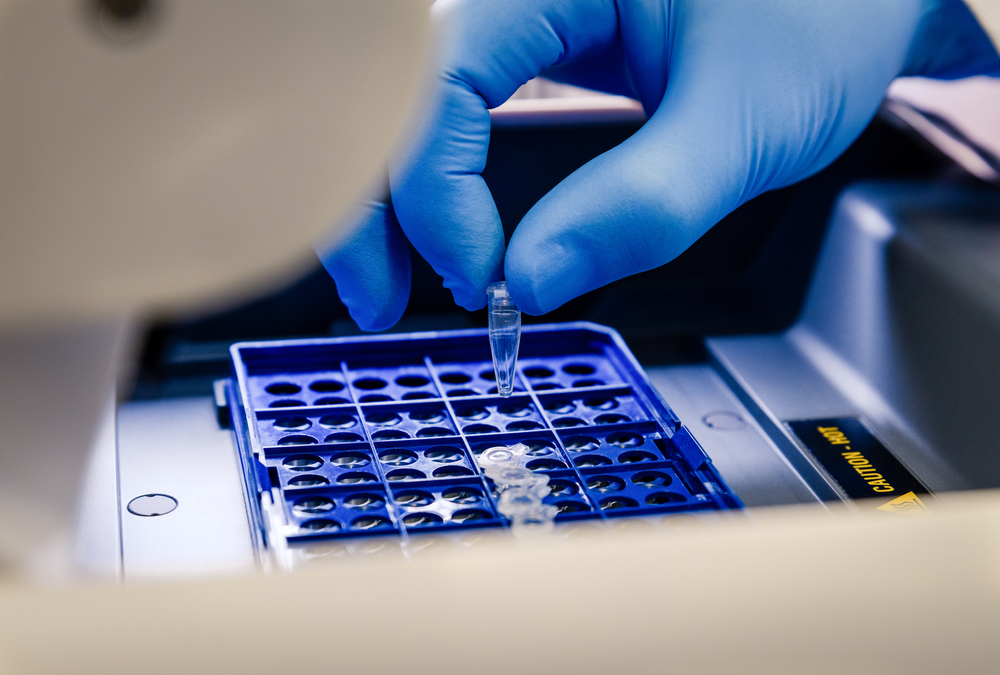[et_pb_section fb_built=”1″ admin_label=”section” _builder_version=”4.16″ da_disable_devices=”off|off|off” global_colors_info=”{}” da_is_popup=”off” da_exit_intent=”off” da_has_close=”on” da_alt_close=”off” da_dark_close=”off” da_not_modal=”on” da_is_singular=”off” da_with_loader=”off” da_has_shadow=”on”][et_pb_row admin_label=”row” _builder_version=”4.16″ background_size=”initial” background_position=”top_left” background_repeat=”repeat” global_colors_info=”{}”][et_pb_column type=”4_4″ _builder_version=”4.16″ custom_padding=”|||” global_colors_info=”{}” custom_padding__hover=”|||”][et_pb_text admin_label=”Text” _builder_version=”4.23.4″ background_size=”initial” background_position=”top_left” background_repeat=”repeat” custom_padding=”||0px|||” global_colors_info=”{}”]The use of swabs for sample collection has become part of daily life in the age of COVID-19. Much work has gone into understanding the best materials, buffer, and assay solutions when developing robust assays for the detection of pathogens from samples. During the COVID crisis, it was clear that false positives and false negatives became problematic for many patients. The first step in solving this dilemma is starting with the best possible sample to test. Collecting enough of a pathogen for testing from a patient or surface is partly due to the properties of the pathogen and the collection material. Depending on the characteristics of the pathogen to be tested, different types of foam swabs may have differential affinities for the pathogen.
Choice of Foam and Buffer Depends on the Pathogen
The surface charge of a pathogen is determined by the specific makeup of the pathogen as well as its environment. Every pathogen’s surface has a unique mixture of proteins, lipids, and exposed sugars that, when calculated, have either a nonpolar, net positive, or net negative charge. When we layer on top of that the charge effect of pH and any counter ions in solution on the local environment of the pathogen, we come to see the importance of making the appropriate choice of foam swab and buffer to be used for collection. Below, we will discuss some of the surface differences of well-known pathogens.
When we think of bacteria, we typically think of two categories: Gram-positive and Gram-negative bacteria. Gram-negative bacteria include bacteria such as E. coli, a well-known human pathogen. The Gram staining procedure can differentiate between Gram-positive and Gram-negative bacteria because of the nature of the surface of the bacteria. Gram-positive cells, such as the probiotic B. subtilis, have a thick peptidoglycan layer, while Gram-negative cells do not. They retain the stain differently, allowing one to determine the type of cell. What does this mean for the surface charge? The drastic differences in the makeup of these cell surfaces that allow different dyes to bind also show major changes in charged surface area. Recent studies show that the density of negative charges on the Gram-negative E. coli cell is roughly seven times larger than Gram-positive cells, suggesting the surface charge of Gram-negative bacteria would be about seven times more negative (Wilhelm et al., 2021). Utilizing a foam swab doped with cations or including a polymer with positive nitrogenous groups may be a great way to ensure you are binding the pathogen of interest and repelling those that may interfere with the assay.
What about viral pathogens? Just as described above for bacterial pathogens, viruses also have varying compositions that effect the net charge of the viral particles. Much work has gone into understanding at what pH point (pI) various viral particles are neutrally charged (Heffron and Mayer, 2021). For instance, for Influenza A H1N1, the pI was determined to be 4.5 under low salt conditions (Noda, 2012). Time for a little chemistry lesson! At pH 4.5, the Influenza A particle would be neutrally charged. At pH 7.4, the pH of water, the viral particle would be net negatively charged. At pH 2.5, around the pH of stomach acid, the viral particle would have a net positive charge. Viruses have a wide range of pI and it is all dependent on the particular virion and salt concentration. Here, we see how the choice of foam swabs, along with the choice of the buffer pH for collection, can help to increase the yield of the pathogen of interest and decrease the yield of pathogens that are not of interest. If you are interested in a virus with a high pI, say 7.4, you might want to consider a foam doped with negative ions or a polymer foam with multiple free carboxyl groups while using a buffer around pH 6.0. Alternatively, you could use a positively charged foam for the same virus with a buffer pH of 9.4. Some of these have to be empirically determined to ensure that the downstream assay will work in the buffer of interest. However, there are multiple ways to get at the same pathogen using these ideas.
Taking all of these incremental differences in stride allows for a more robust downstream test where one can be sure the foam swab and buffer choice picked up as much starting material as possible.
References:
Michael J. Wilhelm, Mohammad Sharifian Gh., Tong Wu, Yujie Li, Chia-Mei Chang, Jianqiang Ma, Hai-Lung Dai, Determination of bacterial surface charge density via saturation of adsorbed ions, Biophysical Journal, Volume 120, Issue 12, 2021, Pages 2461-2470, ISSN 0006-3495, https://doi.org/10.1016/j.bpj.2021.04.018.
Joe Heffron and Brooke K. Mayer, Virus Isoelectric Point Estimation: Theories and Methods, Applied and Environmental Microbiology, Volume 87, Issue 3, 2021, DOI: https://doi.org/10.1128/AEM.02319-20 .
Takeshi Noda, Native Morphology of Influenza Virions, Frontiers in Microbiology, Volume 2, Article 269, 2012.
[/et_pb_text][et_pb_team_member name=”Don Anderson, MBA, PhD” position=”Senior Innovation Manager at Baylor University” _builder_version=”4.23.4″ _module_preset=”default” global_colors_info=”{}”]For over 20 years, Dr. Anderson has been blazing a trail in the academic, biotech, and pharmaceutical industry settings. He has been involved at various levels in biotech start-ups and Big Pharma. In 2011, he received his PhD from Cornell University in Biochemistry with concentrations in Chemical Biology and Biophysics. While being trained in the lab of National Academy Member, Dr. Patrick J. Stover, he uncovered the mechanism behind folate-related neural tube defects. As a post-doctoral fellow in the Nobel prize winning Brown and Goldstein lab at University of Texas Southwestern, he worked on determining mechanisms of cholesterol homeostasis. He discovered the general path of a cholesterol molecule following LDL absorption.
[/et_pb_team_member][/et_pb_column][/et_pb_row][/et_pb_section]




